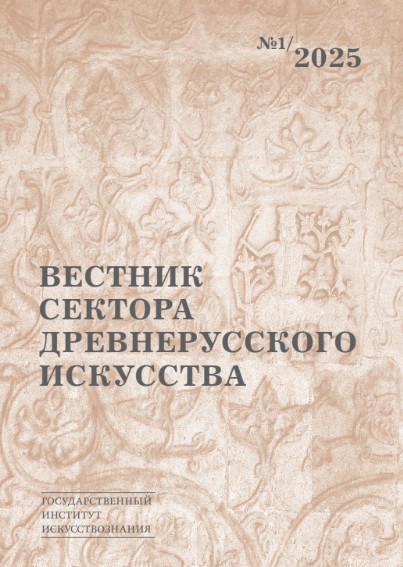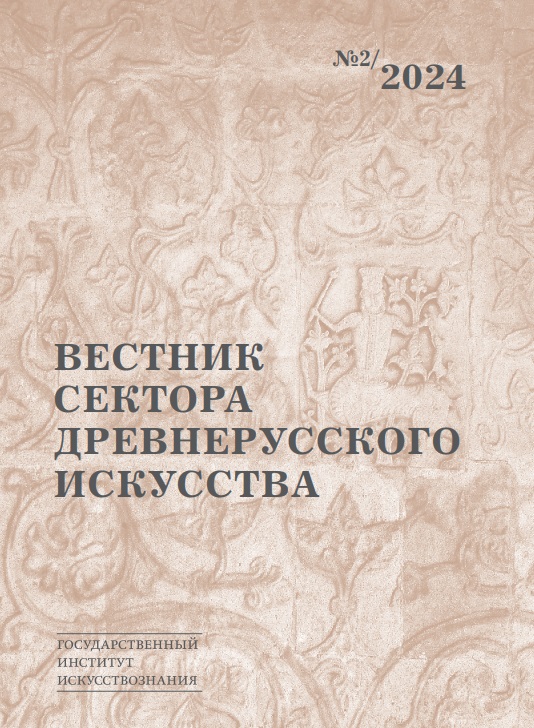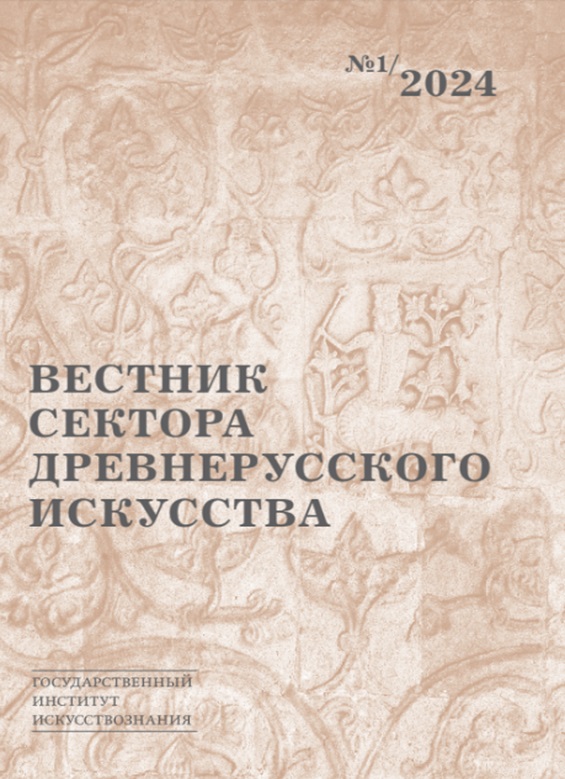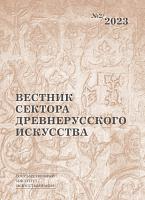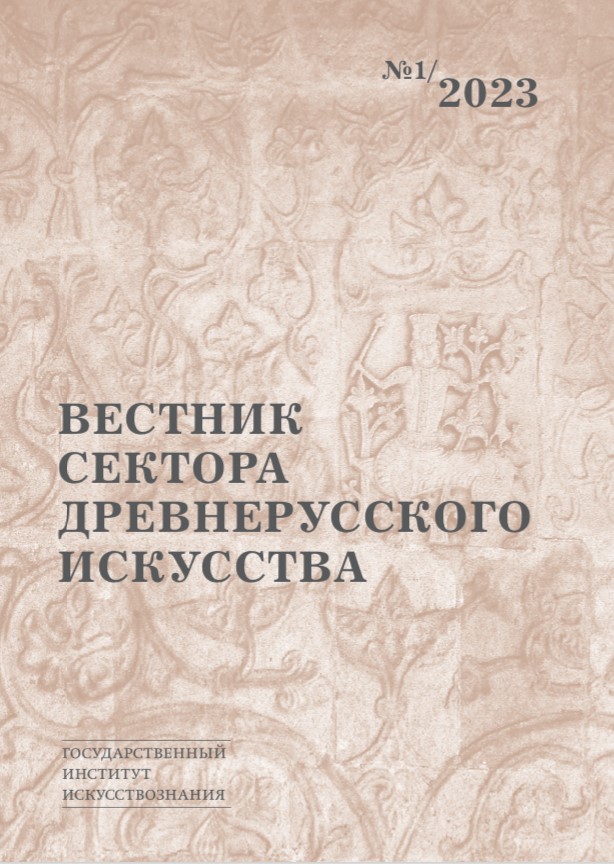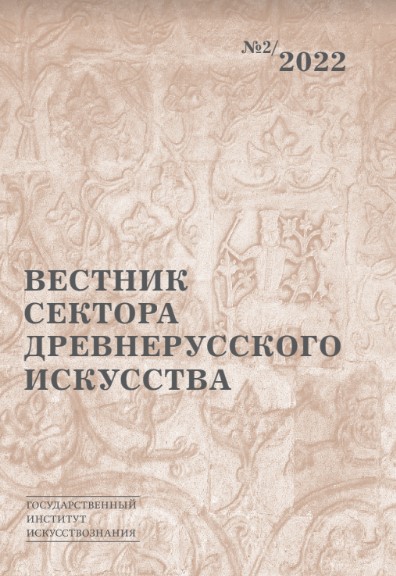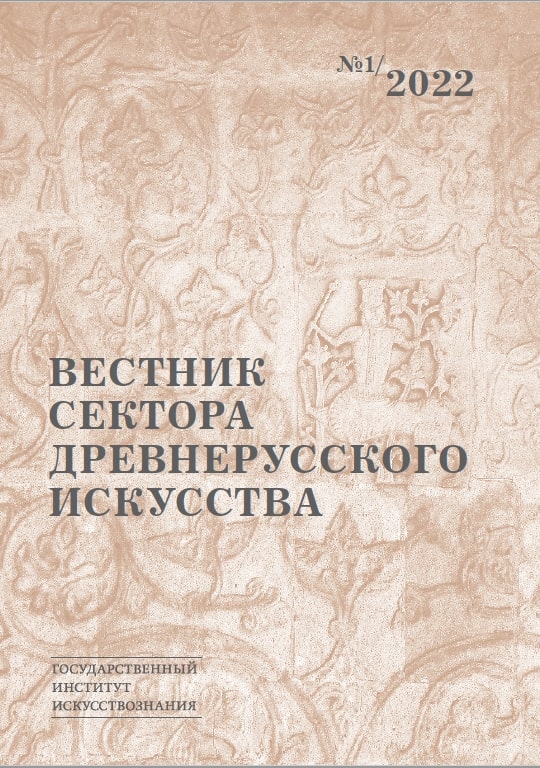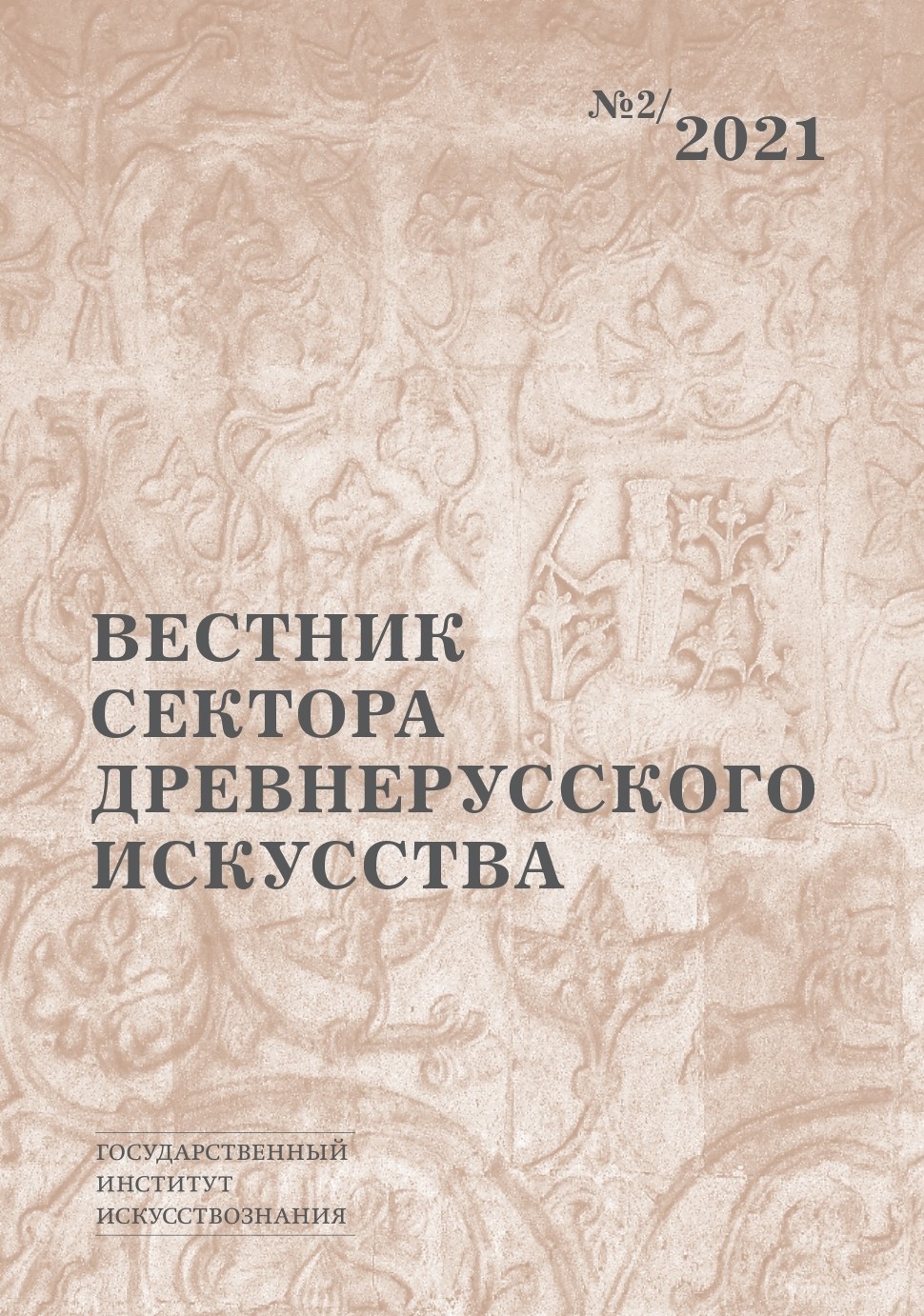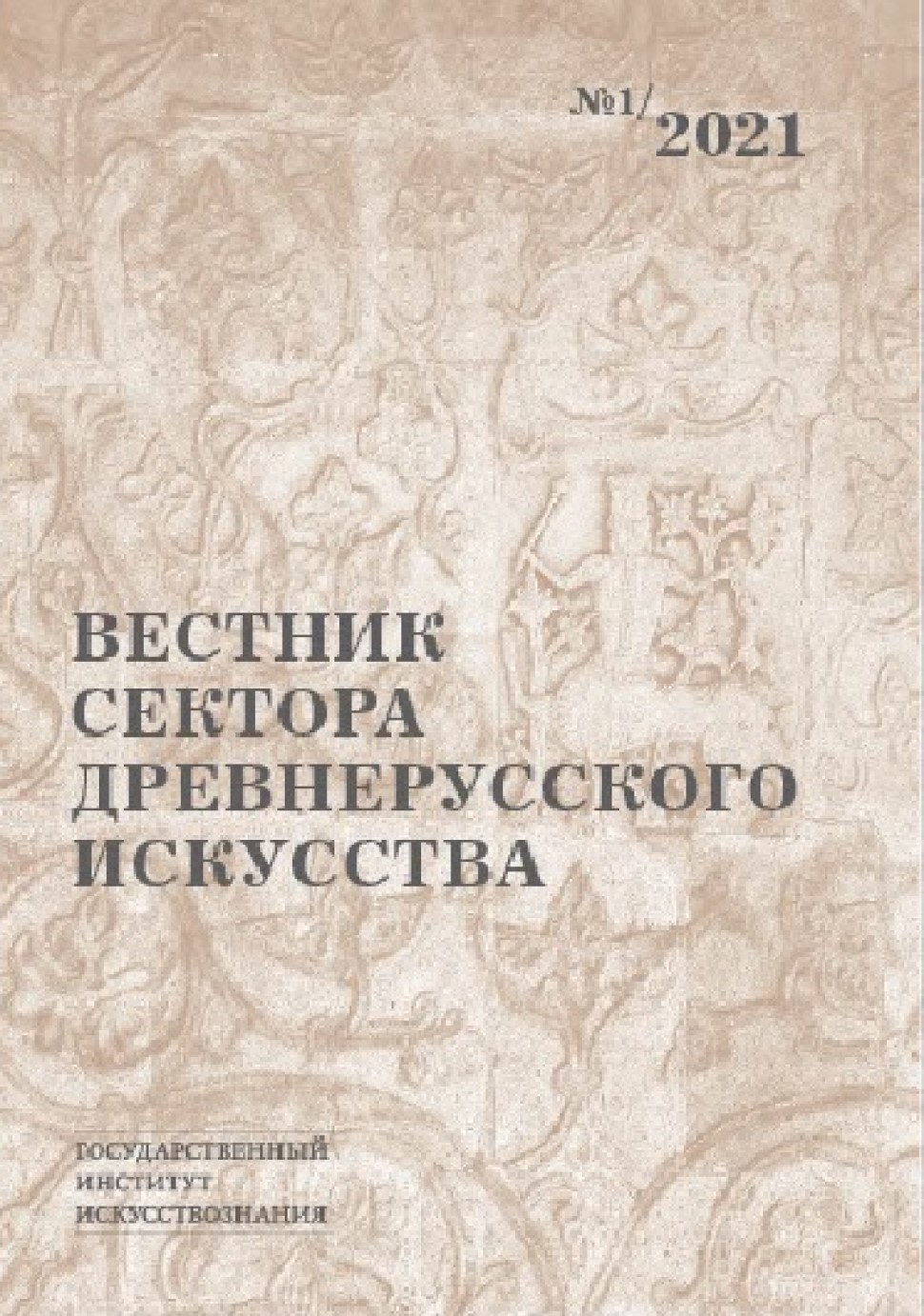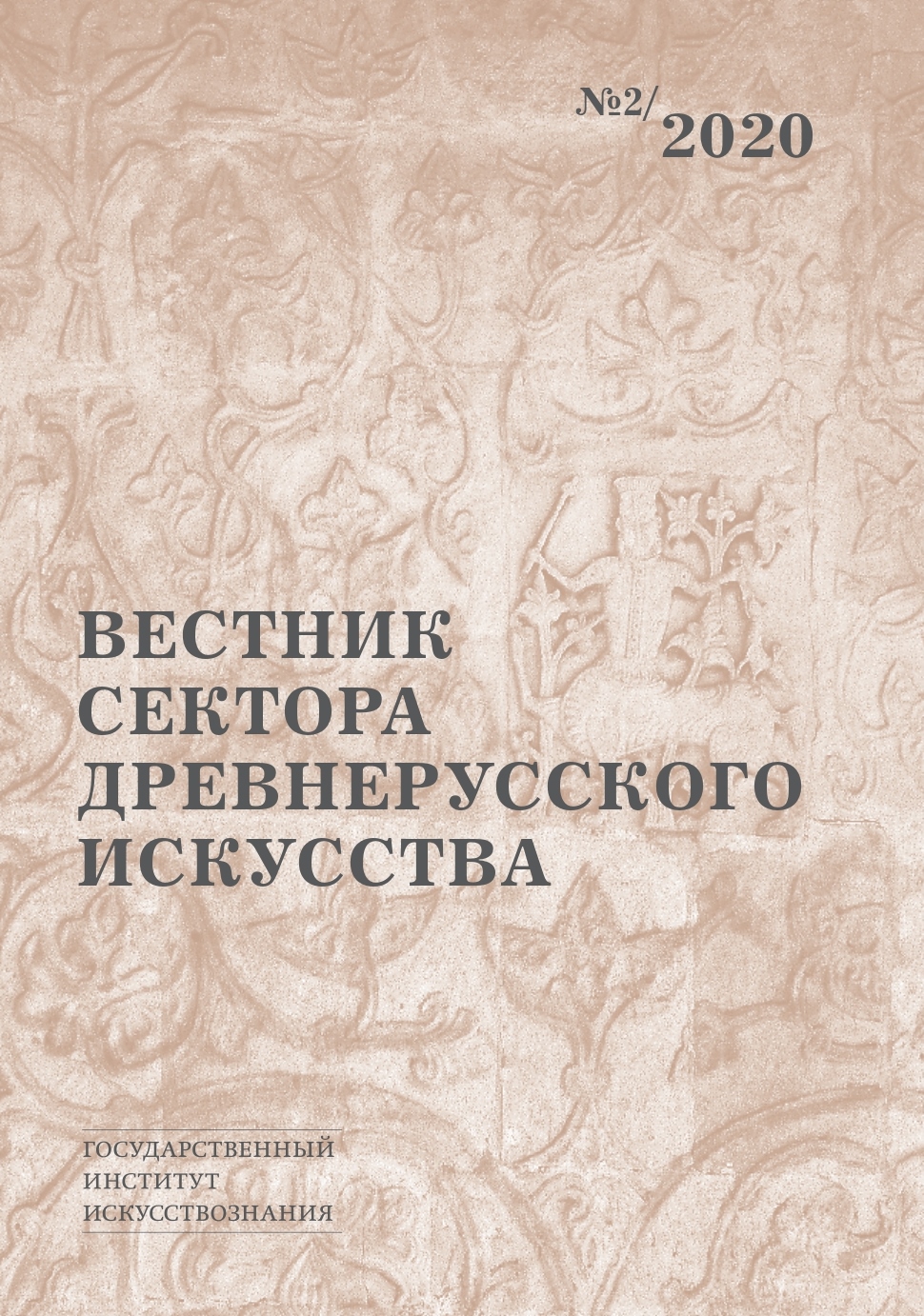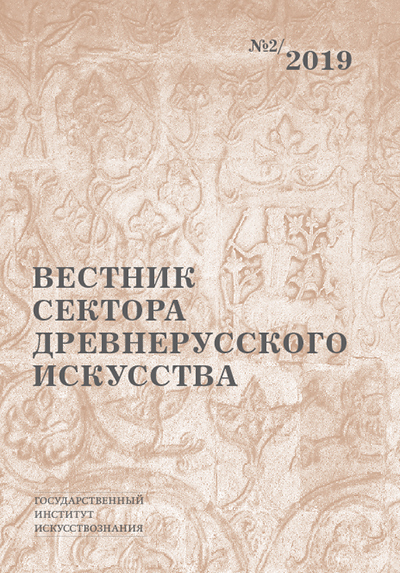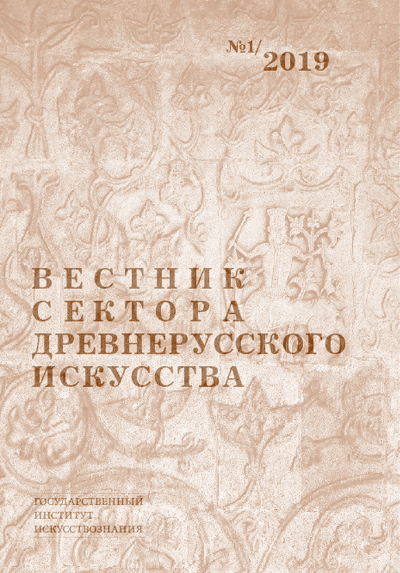2025 № 1
Articles
Lev Lifshits. The 13th century Icon of the Mother of God. Italy or Byzantium?
Abstract
Based on the comparison of two Eleusa icons — one Byzantine and one South Italian —this study aims to define the differences in the poetics of icons from these regions. The author mainly focuses on the principles of spatial composition, noting the differing approaches of Byzantine and South Italian masters to plastic form and the relationship between the image and the compositional space.
Keywords
Byzantium, Italy, icon, composition, background, plasticity, space, color, movement, imagery
Abstract
The article is devoted to the analysis of the iconographic program of the paintings and the rationale for the new dating of the paintings of the Church of the Archangel Michael “on Skovorodka,” which was destroyed in 1944 during the German shelling of Veliky Novgorod. The reconstruction of this program is carried out on the basis of restoration materials from 1937–1938, preserved in the manuscript department of the State Tretyakov Gallery. As a result of the analysis of iconography and style, the author concludes that the frescoes of the temple were created in the 1420s, and about the possible participation of a visiting Greek master in the work of the Novgorod team. This is evidenced by the fundamental closeness of the painting system of the Church of the Archangel Michael to one of the most famous monuments of painting of the Byzantine circle of the late Paleagogic period – the Church of Our Lady of Pantanassa in Mystras, which was decorated around 1429.
Keywords
Monumental painting, Veliky Novgorod, fresco, pictorial program, late Palaeologian style, ancient Russian art.
Pavel Aleshin. Fortifications of the Moscow Kremlin and Architectural Theory in 15th Century Italy
Abstract
The article analyzes the fortifications of the Moscow Kremlin, built by Italian masters during the reign of Grand Duke Ivan III, in the context of the architectural theory of 15th-century Italy. It explains why it is not entirely correct to consider them in the context of the ideas of Francesco di Giorgio Martini and compare them with the monuments of the ‘transitional period’ in the history of European fortification art (1470–1520s), and why it is more correct to consider the Kremlin defensive structures in the context of earlier monuments and architectural theory, presented, in particular, by the treatises of Leon Battista Alberti and Filarete. An analysis of the fortifications of the Moscow Kremlin in light of the ideas expressed by Alberti and Filarete shows that, while working on a specific order – the rebuilding of the dilapidated medieval city fortifications – Italian architects continued to think in their characteristic categories of creativity within the framework of the architectural theory that existed in Italy in the 15th century.
Keywords
Alberti, architectural theory, art of fortification, Filarete, Moscow Kremlin, Renaissance
Abstract
The widest range of monuments of the 15th-16th centuries - panagias, liturgical covers, Gospel frames - demonstrate the special interest of the epoch to the theme of "The Mother of God of the Incarnation". The range of these works of art includes the central icon of the forming prophetic row of the high iconostasis. The liturgical idea contained in the image of "The Mother of God of the Incarnation" and the associative connection of the icon with a lid of the Ark of the Covenant, guarded by the cherubs, and with the arched entrance to the Holy of Holies, a place of theophany - all these factors initially determined the process of integration of the image of "The Mother of God of the Incarnation" into the prophetic row of the iconostasis that was forming in the 15th century, and subsequently its consolidation as the central icon of the tier.
Keywords
Our Lady of the Incarnation, Savior in power, high iconostasis, prophetic row, panagia, panagiar, iconographic type, theophany, liturgical idea
Abstract
The article publishes a previously almost unknown monument of Pskov architecture – the southern aisle of the Church of the Archangels Michael and Gabriel in Pskov. This aisle temple, dedicated to the Dormition of the Virgin Mary, has an original ceiling with a vault that resembles both the intersecting arches of Pskov pillarless churches and the cross vaults of Moscow monuments. The Dormition aisle can be dated to the second half of the 16th century and is classified as one of those buildings in which the Pskov tradition changed under the influence of Moscow architecture of its time.
Keywords
Pskov, architecture, 16th century, pillarless churches, vaults, rare type of vault, groin vault
Abstract
The article is devoted to the insufficiently explored monumental painting of the Cathedral of Nativity of Theotokos in Savvino-Storozhevsky Monastery. The article examines the painting of the altar, which is located under the record of 1872–1873, and probably repeats the murals of 1649–1650. The subjects of the late pictorial layer are connected not so much with the monuments of the second quarter — the middle of the 17th century, but with the ensembles of the 14th —16th centuries. This is indicated by the compositions The Praise of the Theotokos, The Communion of the Apostles, The Holy of Row and compositions from the cycle of The Passion of Christ in the central altar conch, scenes from the life of Saint John the Baptist in the northern apse of the altar and scenes from the life of Saint Nicholas in the deacon. The only close analogue to the painting of the altar of the Cathedral of Nativity of Theotokos is the painting of the Trinity Cathedral at the Trinity-Saint Sergius Monastery in 1635, which reproduces the program of the 20s of the 15th century. Analysis of the existing painting of the altar of the Nativity Cathedral indicates a repetition of the program of 1649–1650, and a number of archaic features may indicate its connection with the ensemble of the first third of the 15th century.
Keywords
Monumental painting, Old Russian art, Russian art of the late Middle Ages, Russian art of the 17th century, Zvenigorod
Abstract
The article is devoted to a review of materials on the restoration of the Kazan Cathedral on Red Square in the 1920s. The main issue is a review of the archival materials of P.D. Baranovsky, who carried out the restoration work. An attempt has been made to point out ways to reconstruct the currently missing materials of P.D. Baranovsky from other sources. The article also provides an overview of the existing photographic materials on the restoration and demolition of this monument.
Keywords
Kazan Cathedral on Red Square, P.D. Baranovsky, archival sources, restoration, architectural monument, reconstruction.
Publications
Abstract
The paper examines the history of the building of the temple of Maxim the Confessor in Kitay-gorod, built at the expense of members of the Gotyinaja sotnja – Maxim Filippov son Verkhovitin and Maxim Vasiliev, son of Sharovnikov. The main attention is paid to the com-parative analysis of the synodics records of Maxim Verkhovitin and his widow Natalia, on the basis of which it is concluded that the husband and wife considered themselves members of dif-ferent genera-families.
Keywords
Russian architecture of the late 17th — early 18th century, temple building, Moscow, Kitay-gorod, Church of Maxim the Confessor, Gostyinaja sotnja, Maxim Verkhovitin, Maxim Sharovnikov, funeral culture, synodic, epigraphy of Moscow Russia, Corpus Inscriptionum Rossi-carum
Abstract
The article is devoted to the tile decoration of the Holy Gate of the Church of St. John the Baptist in Tolchkov. Its significant losses have sharpened the question of the urgency of the search for reliable information and replenishment of the surviving fragments. Appeal to new data, made on the basis of previously unknown materials from the archive of A.V. Filippov, provides new information about the original tiles, necessary for the preservation of the authentic appearance of the monument.
Keywords
Tile, copy, losses, painting of tiles, restoration, photos by I.F. Barshchevskiy, archive of A.V. Filippov.
Chronicles
Exhibitions
Irina Shalina. Masterpieces of Sacred Art from the Kushnirskiy Collection
